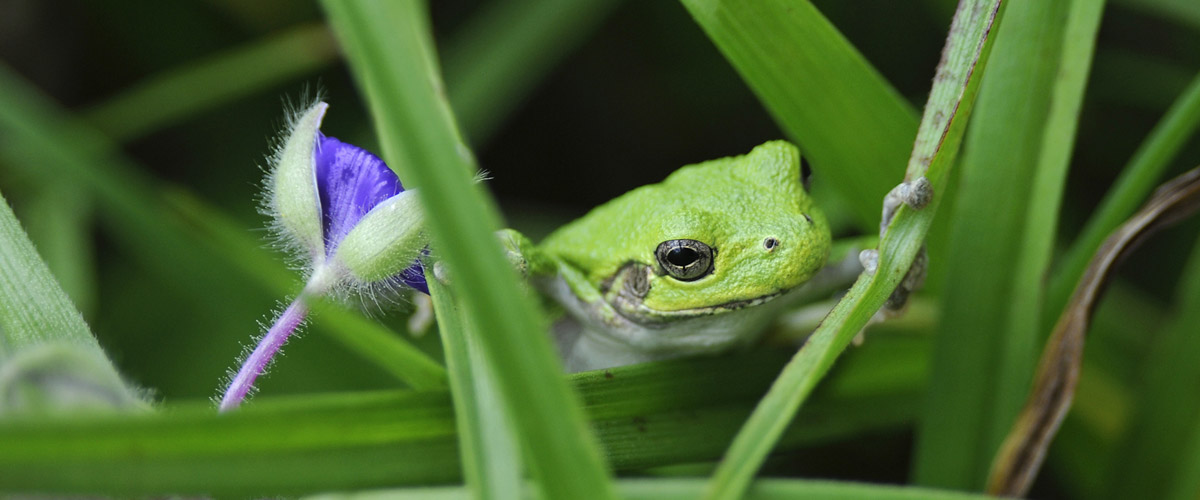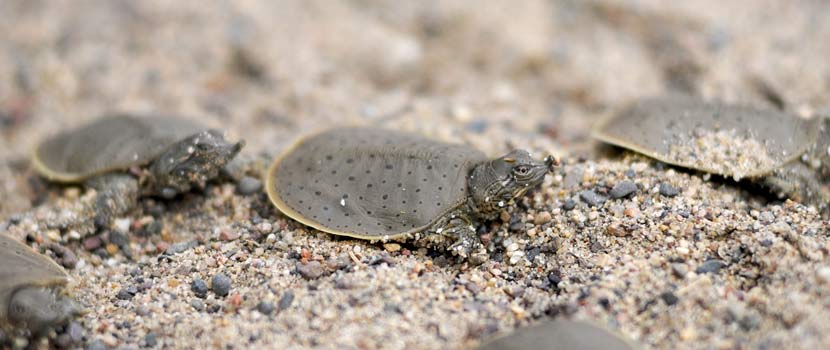
As the days warm and the earthy, damp smell of spring fills our noses, we start to hear the call of frogs. These small creatures have survived the long cold winter and now they have one goal: laying eggs.
Once that task is completed, they spend the rest of the year trying to survive until next spring when they can lay eggs again. To survive until next spring, frogs are full of amazing adaptations. One of my favorite adaptations are their tongues. Frogs are famous for their long sticky tongues, but this fame comes with a lot of misconceptions.
How Long Are Frogs' Tongues?
The first misconception is about the length of their tongues. Art, cartoons, and games all show a tongue that stretches out for feet at a time. I remember in IT class in elementary playing a game on the computer where you have to guide a frog’s tongue all the way through a maze to catch a fly. The reality is that frogs do have long tongues, at least relatively.
A frog’s tongue is usually around one-third the length of its body, meaning it is rarely more than 1 inch long, and often smaller. Not large by our standards, but huge by theirs. If our tongue was a third the length of our body, our tongue would touch our belly buttons!
In addition, the frog tongue is attached to the front of the frog’s mouth, allowing it to launch almost the entire tongue out of its mouth.
It launches incredibly fast. A frog can shoot out its tongue, capture an insect, and pull it back into its mouth within .07 seconds — five times faster than the human eye can blink.
Insects caught by the tongue can experience 12 Gs or 12 times the force of gravity — typically astronauts experience 3 Gs during a rocket launch.
Are They Really That Sticky?
The second misconception is how sticky their tongue is. Generally we think of a frog tongue as being sticky all the time, but that is not the case. If a frog’s tongue was always sticky, it would stick its mouth together. Instead, a frog’s tongue produces mucus right before the tongue impacts the insect.
This mucus is amazing. When the tongue first hits the insect, the tongue envelopes the insect and the mucus-y saliva penetrates any gaps or cracks in the insect’s exoskeleton.
During the high speed of the tongue retraction, the mucus becomes five times stickier than honey, helping to pull the insect into the frog’s mouth.
Once in the mouth, a frog’s eyes push into its mouth. The slow speed causes the mucus to lose its adhesive properties, allowing the insect to be pushed by the eyes into the frog’s stomach.
These two adaptations allow frogs to be highly efficient predators of insects, worms, pill bugs, and just about anything else that moves and can fit in a frog’s mouth. This helps them survive until next spring when they can lay eggs again, and continue their life cycle.
Learn More About Frogs
These are just a few of the cool things about frogs. If you want to learn more about them, including how some can survive becoming frogcicles in the winter and how frogs can help us stay healthy, tune into the Three River’s podcast, The Wandering Naturalist.
This podcast explores the cultural history and the nature in the area that helped to shape our parks. April’s episodes focus in on what makes frogs special. You can download episodes from the web or follow on Google Play, iTunes, Spotify and Stitcher.
About the Author

Brandon Baker has been an interpretive naturalist at Eastman Nature Center for 10 years. Before working for Three Rivers Park District, he worked as a naturalist for the National Park Service, Wood Lake Nature Center and Springbrook Nature Center. He moved to Minnesota from Florida for the snow, and he is a big fan of Star Trek.
Related Blog Posts
Owls of Three Rivers
By: John Moriarty
There are 10 species of owls that have been found in Three Rivers Park District. Discover which owl is most commonly seen or heard in the parks and learn more about its habits and lifestyle.
9 Things We Learned from the Medicine Lake Urban Turtle Project
By: John Moriarty
Where do spiny softshell turtles go after nesting on the beach at French Regional Park? How far do softshell, painted and snapping turtles travel in the water? Are they active in winter or affected by water quality? Find out what we learned during the Medicine Lake urban turtle project.
Pollinators: The Great Monarch Migration
By: Elaine Tucker
Have you ever wondered what a monarch tag is or why we tag monarch butterflies? Read on to discover more about these beautiful insects and their incredible 2,000-mile migration.



